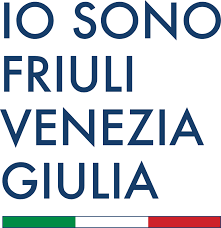Cividale del Friuli since 25 June 2011 is listed in the UNESCO World Heritage.
It is the 46th Italian site on the famous list.
The inclusion of the site in the UNESCO World Heritage list also brought with it and most significant testimonies of Longobard Cividale:the Gastaldaga with theTempietto Longobardoand the remains of theEpiscopal Complex (the cultic complex and patriarchal palace), renovated by Callistus, the remains of which are exhibited and preserved at theChristian Museum and Cathedral Treasuryand the National Archaeological Museum.
HOW TO GET THERE
Cividale can be reached by public transport: from Udine by wittorina (central station and Sant'Osvaldo station) or by bus (TPL FVG).
ACCESSIBILITY
In the historic centre there are many areas with unevenness or cobblestones. Stone lanes facilitate the passage of wheeled vehicles such as bicycles or narrow buggies. Wheelchairs, mobility scooters or wider buggies cannot keep all their wheels on the lane as it is too narrow and forces them to drive over cobblestones.
A stroll through the various squares and points of interest is also feasible for persons with reduced mobility or who move on wheels as the paving is porphyry with the exception of the cobbled streets. The pavements are rather narrow, so that those on wheels are forced to stay on the carriageway. However, the historic centre is mainly pedestrianised.
Parking spaces for people with disabilities are located in the vicinity of the historic centre, thus allowing cars to arrive in the vicinity of the Cathedral, the Christian Museum or the Pontel Diavolo.
Tactile-plantar paths are not frequent.
INFORMATION ON THE CITY
Cividale is located at the mouth of the 'Natisone Valleys', and since antiquity it has represented a transit point between the Friulian plain, the upper Soča Valley and, looking further afield, the vast central European area. Cividale preserves evidence of an ancient settlement of ancient Veneti from the 6th century B.C. onwards, and populations of Celtic stock from the 4th century B.C. onwards, who are said to have left traces of themselves in the mysterious complex known as the Celtic Hypogeum near the bridge. (currently not open to visitors)
Around 50 B.C.Julius Caesar established a forum on the right bank of the Natisone River:Forum Iulii, which soon becamemunicipium. However, the historical phase that has left the most important testimonies is that linked to the presence of the Lombard populations (568 A.D. - 776 A.D.) who founded their first duchy here. To the Lombards belong the archaeological and architectural testimonies of primary importance: the Tempietto inside the S. Maria in Valle complex, the grave goods of the necropolis in the Archaeological Museum, the Ratchis altar and the Baptistery of Callisto in the Christian Museum, are the historical and artistic heritage that in 2011 was recognised by UNESCO



